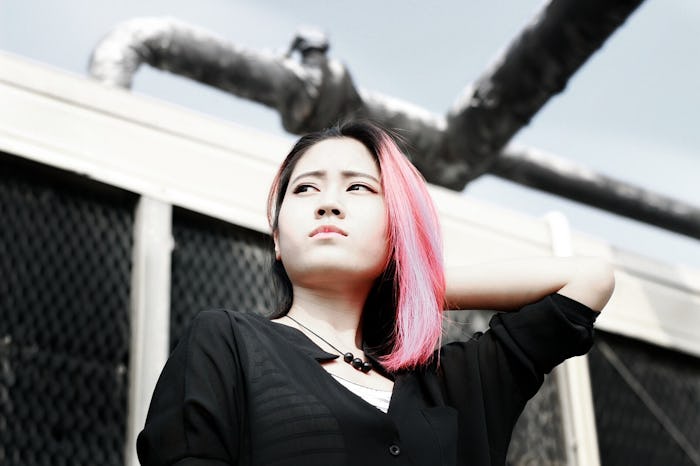As if hormone-induced mood swings and a rapidly changing body weren't enough to stress out any woman during pregnancy, you can add another concern to the list. It seems many women, myself included, have one major question on their minds: is it safe to color your hair while pregnant? Now, in the grand scheme of things, this may sound like a fairly superficial issue to have, but believe me, it's not.
From the moment you find out you're going to be a mother, your whole world is turned upside down. And the biggest part of your world to take a hit? Your identity. You're transitioning from the woman you were before becoming pregnant into the mother you will soon be. Not to sound all doom and gloom, but the intersection of pregnancy and personal expression can be some murky waters to navigate. If a large chunk of your aesthetic pre-baby was rocking some outrageous hues in your hair, then it's totally understandable that you might not be quite ready to let that go. So is it truly safe to color your hair during pregnancy or is it a necessary sacrifice?
Well, first you might want to consider how your hair will be transforming in the coming months. First, it'll change due to prenatal vitamins which keep your tresses looking shiny and healthy, according to Dr. Oz's site. But did you know there are other ways your hair changes all on its own during pregnancy? According to the American Pregnancy Association (APA), "pregnancy, in itself, can naturally change the hair’s texture. Pregnancy may also cause your hair to react differently to perming or coloring." Speaking from personal experience, my hair post-pregnancy now tends to pick up the brassy, warm tones in a color, so my stylist has to balance it out to get back to my preferred ashy, cool tones.
If you really want to continue coloring your tresses throughout your pregnancy, it's a good idea to at least wait until after the first trimester has ended. Though 12 weeks may seem like a long wait, the peace of mind will be well worth it. According to research from The National Health Service , waiting to color your hair until the second trimester has begun is best because the first trimester is when the majority of your baby's development occurs.
Though there are plenty of coloring options given by stylists and scientists alike, there are also researchers who advise against it completely. In a study published in the National Center for Biotechnology Information, researchers concluded, "Alarming data points toward a link between hair-dye use in pregnancy and the development of several childhood malignancies in offspring." Yet science is always evolving and new evidence could be right around the corner. So until the scientific and medical community can agree on a solid answer, check out these safe color ing alternatives for moms-to-be.
1Opt For Ombré
Hair coloring techniques like balayage, ombré, color melting, and hand-pressed color are all on-trend. And lucky for you, the color or bleach is applied away from your roots and scalp, meaning it can't get to your developing baby.
2Go Natural
With the scientific community unable to provide definitive answers on the effects of hair treatments on humans during pregnancy, many pregnant women choose to go the chemical-free route instead. The experts at Parents magazine added that vegetable-based dyes, ammonia-free colors, or organic dyes are all safer options than permanent colors, which can contain harsh chemicals like ammonia and peroxide. As always, though, talk to your doctor if you're still having some major concerns about coloring.
3Try Touch-Up Alternatives
If you don't have a complicated hair color look going on (i.e. rainbow hues, platinum blonde hair when you're naturally brunette), then one option would be to just focus on maintaining your roots. Medical journalist Colette Bouchez wrote in Pregnancy magazine that, if the natural color of your hair isn't too different than how you've dyed it, you can get away with using hair mascara to hide your roots. This is a fantastic alternative since the product only coats the surface layer of your hair without actually affecting your scalp, follicles, or strands the way permanent dyes can.
